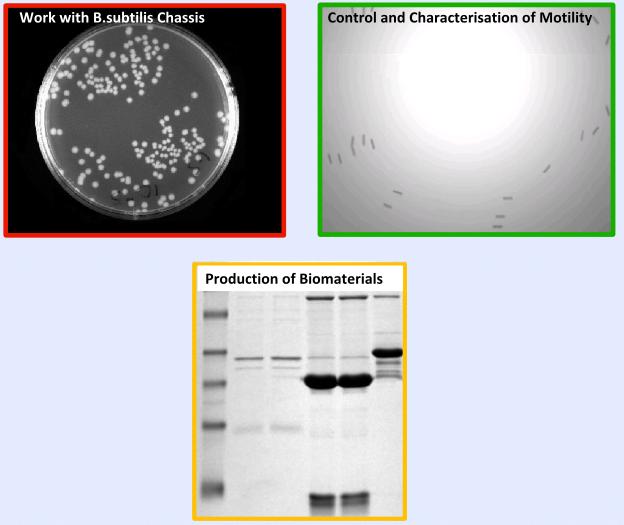From 2008.igem.org
(Difference between revisions)
|
|
| Line 52: |
Line 52: |
| | | | |
| | <hr><br> | | <hr><br> |
| - | {{Imperial/Box2||Of course, that's a very simplified description of our project. We expanded upon our project by looking into possible areas for real-world application; for a case-study of such an implementation check out how our project fits in with [[Team:Imperial_College/Biocouture | '''>>> Biocouture >>>''']]}} | + | {{Imperial/Box2||Of course, that's a very simplified description of our project. We expanded upon our project by looking into possible areas for real-world application; for a case-study of such an implementation check out how our project fits in with [[Team:Imperial_College/Cellulose | '''>>> Biocouture >>>''']]}} |
| - | {{Imperial/EndPage|Chassis_2|Biocouture}} | + | {{Imperial/EndPage|Chassis_2|Cellulose}} |
Revision as of 08:21, 24 October 2008
|
Summer Summary
| Design
|
|
In order to achieve our specifications of design previously described, we require the following devices;
- Light sensing device - Converting a light input into a PoPS output,
- Biomaterial production device- Converting a PoPS input into an output of biomaterial production,
- Motility Control device - Converting a PoPS input into an output of motility arrest,
- Integration device - To allow integration and selection of our genetic constructs and devices into B,subtilis,
Each of these constructs makes up the final device which is shown below:
(AB is our antibiotic resistance cassette, ytvA is the gene controlling the light-sensing pathway, SB is the biomaterial, epsE the clutch and the 5' and 3' sections are integration sites. Light-inducible promoters are labelled with an 'L')
|
|
| Modeling - Overview
|
Growth Curve
Genetic Circuit
Motility Analysis
|
|
| Implementation
|
|
Following the design stage of our project we moved on to the implementation stage. This involved construction of a cloning strategy, construction of our biobricks and transformation and characterisation of these biobricks in B.subtilis. For more information on this aspect of the project please see the Wet Lab Hub
|
|
| Testing
|
|
The testing and validation of our project can be split into three main areas;
- Work with B.subtilis - Including characterisation of growth curves and transformation,
- Characterisation and control of motility
- Production of Biomaterials in B.subtilis
Please see the Results Page for more information on the key results from the testing and validation.
|
|
| Achievements
|
|
Here is a summary of the achievements of the Imperial College 2008 team:
- Submitted x..number of documented parts to the registry,
- Characterized and improved the existing part.....,
- Developed integration bricks, to allow devices to be constructed that can then be excised and planted into B. subtilis
- Layed the groundwork for future teams to work with B. subtilis by BioBricking promoters, RBSs, terminators and so on and characterising them
- Showed that expansion into other organisms is a definite possibility!
- Helped Bristol by sending them a mini-iGEM project: Chemotactic dot-to-dot with information on quorum sensing and directed movement
- Helped Bristol by sending them a part (BBa_J37015) from our 2007 stock which was an empty vector in the Registry
|
|
|
|
|
Of course, that's a very simplified description of our project. We expanded upon our project by looking into possible areas for real-world application; for a case-study of such an implementation check out how our project fits in with >>> Biocouture >>>
|
|
|
 "
"



